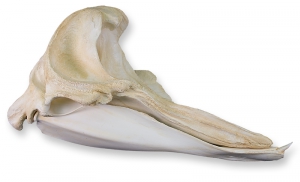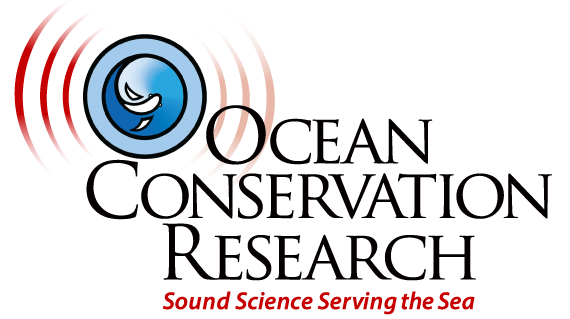Skull Morphology
All vertebrates have a middle ear and inner ear systems in an auditory bulla or otic capsule that is variously fused, embedded, or attached to their skulls. The morphology, or variations in how these attachments evolved tells us much about the particular animal’s adaptations to their environment.
While we are still learning about how aquatic animals hear, we know that animals that hear airborne sound rely on pressure-sensing diaphragms (ear drums) to convert pressure-gradient acoustical energy into physical motion that then mechanically stimulates nerves exposed to the physical motion.
Underwater hearing is complicated by the fact that extreme pressure variations due to water depth can greatly overpower the sensitive pressure sensing excursions of eardrums. As a consequence marine vertebrates have adapted other ways of converting acoustic-mechanical energy through tissues, cilia (nerve fibers), vibrissae (whiskers), and other mechanosensors that are more suitable for an aqueous environment.

Beaked Whale Skull
Adapted for habitat
Terrestrial mammals sense sound through pressure sensing diaphragms
Aquatic mammals conduct sound through fatty tissues (lipids)
Amphibious animals can have either or both types of sound conduction systems
Terrestrial mammals have fused bulla or enclosed oitc capsules
Aquatic mammals can have fused, partially fused, or unattached bulla
Middle Ear
Inner Ear
Cochlea
Inner ear bones (ossicles): Stapes, Incus, Malleus
Semi-circular canals
Bulla (contains inner ear hearing systems of mammals. Size is correlated to the hearing capabilities)
Petrous Pyramid found in humans (very dense for precision; as dense as human teeth)
Hollow Jaw (outer “pan” conducts sound from surroundings into the acoustical lipids)
Acoustical Lipid (conducts sound into the hearing systems)
Aquatic
- Internal otic capsule
- External bulla
- Fused to the skull
- Partially fused
- Not Fused
- Phocidae (earless seals or true seals)
- Otaridae (eared or fur seals and sea lions)
- Odobenidae (walrus)
Cetaceans – order of marine mammals that include:
- Odontocetes (toothed whales: dolphins, porpoises, sperm, beaked, and other whales with ivory teeth.
- Mysticetes (“mustache” or baleen whales)
Diaphragm – a thin tissue tensioned like a drum head.


